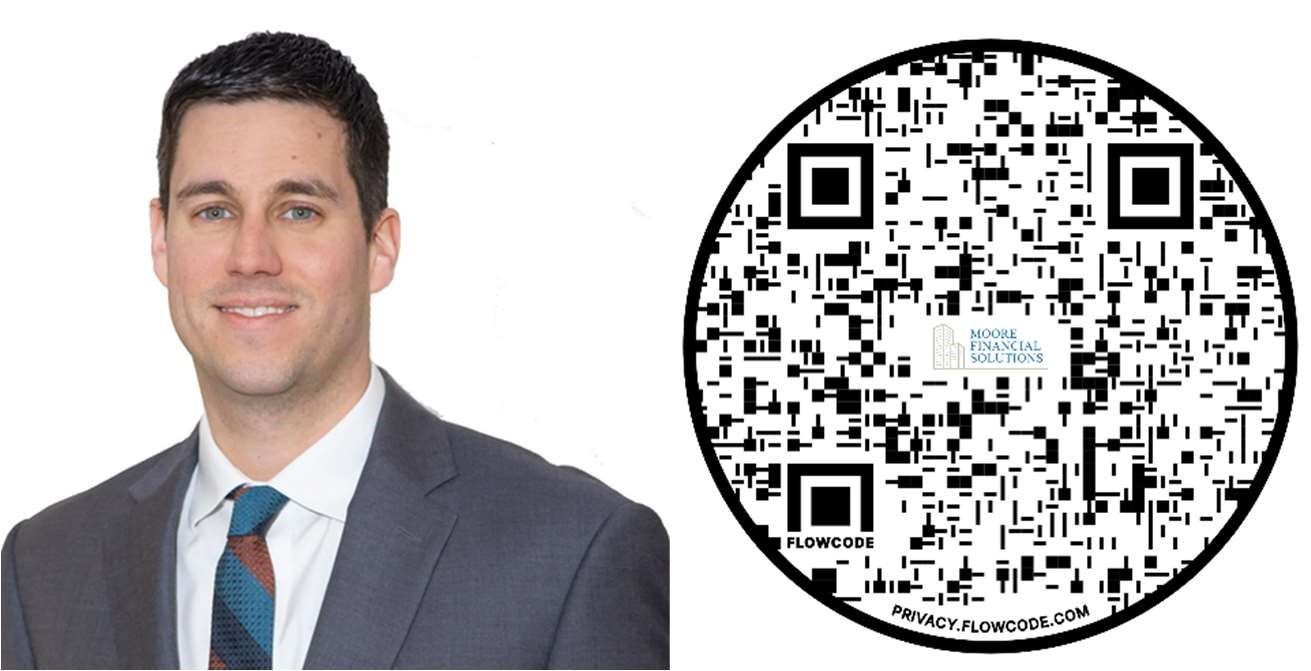The first quarter of 2023 provided an increase in the S&P 500 of 7.03% (1). This welcomed sight
to equity investors occurred as the U.S. 10 Year Treasury Note moved from 3.88%, down to 3.471% (2). Without surprise, equities rallied, as corporations were eyeing a lower interest rate, as they prefer to operate with lower rates. Q1 of 2023 continued the trend of falling rates in the open market, while the Federal Reserve continued to raise rates. In this quarterly review, we discuss the divergence of decreasing open market rates against the increasing Federal Funds rates. We will also highlight the sudden banking crisis (felt mostly by regional banks), and the strategies surrounding rapid increases in short term rates. The Federal Reserve has been aggressively increasing rates. As mentioned in previous Moore F.S. reviews, interest rate increases help determine how quickly the economy will grow. Low interest rates generally mean an easier path to growth but may lead to an overheating economy resulting in inflation. A higher interest rate will reduce inflation but will slow the economy. Currently, Jerome Powell has raised rates multiple times to slow inflation. In many areas, a higher rate has set in, especially in ultra short-term rates. However, the Federal Reserve has struggled to get a meaningful increase on longer dated rates. Furthermore, shorter term debts (a couple years or less) have seen massive increases in yield while longer term debts, such as 10 to 30 year obligations, have increased much less rapidly. In our opinion, investors seem willing to bet that interest rates will not rise significantly over the next few years. Since investors remain willing to purchase treasuries yielding 4.5%, this keeps an invisible cap on rates. Last month the one-year U.S. treasury yield briefly went above 5% (3). Suddenly portfolio managers and fiduciaries had the solution to low yields that we’ve been searching for over the last decade. Just as suddenly, the stock market has a competitor of investment attention, the bond market. The 10 year treasury now offers approximately 3.5% yield, while only one year ago in late March of 2022, it paid only approximately 2.4% (4). This undoubtedly takes away demand from the broad stock market. We began using individual U.S. treasuries in Q1 due to the sudden surge of short-term yield. This marks the first purchases of individual treasuries for Moore F.S. as we found no need to buy treasuries with the
previously extremely low yields. This recent addition allows Moore F.S. to purchase conservative government treasuries at a higher rate than bank certificates of deposit. We note two types of hypothetical investors regarding rates and inflation. First, inefficient investors two years ago (hypothetically) who purchased extremely low yield while their money was significantly eroded due to the high inflation over the next couple years. Secondly, investors experiencing high current short term treasury rates going into what may be cooling inflation. In other words, we aim to see a yield that is significantly higher than the inflation rate. Clearly Moore F.S. intends to be in the second group and although we are not giving the “all clear” on the risk of rising rates, we feel much better at these levels than we did a year ago. As your fiduciary we aim to reduce our exposure to bonds/treasuries while rates rise and own bonds/treasuries in flat or falling interest rate environments.
If you stay up to date on Moore Financial Solutions quarterly reviews, you remember reading about Sam Bankman-Fried (S.B.F. as he is often called) and his real-life story of how not to operate a hedge fund, or any business for that matter. We recently discussed our stance on how S.B.F. and his operations were not connected to broad equity investments. This quarter the latest concern is Silicon Valley Bank (SVB). SVB was the 16th largest bank in the United States with assets of $209 Billion in December (5). Like any bank SVB took in deposits of customers and essentially drove revenue on those deposits in one of two ways; lend out deposited money for a higher rate or buy securities that offer a higher rate than the rate they pay on deposits. Examiners were able to determine the main detriment of the business was the over exposure to U.S. treasuries, like the 10-year treasury that we previously mentioned(6). Let’s dive into the fundamentals of a treasury note. A 10-year treasury note hypothetically issued today pays around 3.471% as discussed above. This investment is typically purchased for $1000, and 10 years later will mature, returning the investor’s $1,000, and each year along the way will pay interest of$34.71. Bonds contain financial risk in two major ways: inflation risk- the potential that the interest rate of 3.471% will lose purchasing power to inflation, and interest rate risk- a reduction in price of the bond due to a rising interest rate environment. Since everyone knew interest rates were rising (except this bank somehow), a limited amount was allocated to bonds in most cases. For example, Moore F.S. recently discussed that we trimmed bond positions July 14th of 2022 to let the “storm” of rising rates pass and buy back into bonds at a lower price. Furthermore, as interest rates were rising, the bonds that SVB purchased for $1000 were losing value. Yes, they would eventually mature 10 years later at $1,000 but SVB had to sell bonds to meet other obligations, and this led to a $1.8 Billion loss (7). The Sub-Prime Mortgage Crisis of 2008 taught us to understand that banks are closely related, and a “run on the banks” can cause a contagion effect. Thus, immediate action is needed. This problem is further complicated by the reaction of individuals and businesses to make a “run on the bank” and desperately/rapidly remove their deposits from the bank. To meet withdraw requests, SVB, in this case, needed to sell notes/bonds at a loss. For each $1,000 they invested in notes they only received $970 from the sale of the note, hypothetically. The more withdraw requests that came through, the more notes were sold at a loss, and this uncontrolled spiral led to the collapse of what was the 16th largest bank in the U.S. just 100 days prior. On March 26th, 2023, First Citizens Bank bought the majority of SVB deposits and stepped in to calm people’s fears (8). Markets have reacted positively, and although a few more banks have fallen, the threat of widespread bank failures seems limited. Moore F.S. aims to add a weighting to the financial sector as bank’s balance sheets remain healthy, and in our opinion, rates will remain high enough to positively impact profits. We believe most clients need to be in the stock market and willing to tolerate the volatility that comes with it. There are many things that can knock the market down; SBF, SVB, etc. and there will always be new problems coming, but we are going to continue to be disciplined in markets. Much like your home, there are always going to be issues arising, but tackling them as they come in is a much better strategy than selling your home. Likewise, volatility in markets doesn’t mean we should sell.
In our discussions with clients, we spend a lot of time strategizing stocks because ultimately more strategy goes into a stock allocation than a bond allocation. Additionally, for many clients with a long enough time horizon, a full stock allocation remains prudent. However, bonds are making a comeback, and in some cases very rapidly. The rates that Moore F.S. can offer through holdings of short-term treasuries have jumped considerably. For example, two years ago (March 28th, 2021) the U.S. 1 Year Treasury Bill offered a less than desirable yield of .065% (9). The current yield to close the quarter now stands over 72 times higher at 4.689% . Furthermore, in those same two years the U.S. 10 Year Treasury Note yield only saw an approximate doubling from 1.72% to 3.471% (10). In the opinion of Moore F.S. we believe this offers an incredible opportunity for a higher yield than bank savings, while continuing to offer a conservative strategy. In our opinion, every interest rate tick higher by short-term treasuries creates more reason to avoid rushing to pay down debts that were issued in a very low interest rate environment. Please call if you’d like to discuss these strategies as we are getting many of these inquiries.
Moore F.S. portfolios are created uniquely and individualized for every client. I not only take pride in this style of management, but I think this is truly the only opportunity to act as a fiduciary in managing the account. In the last six months I have seen an alarming rate of clients just following broadly based advice without identifying what is optimal for their individual situation. Luckily, these clients find better efficiency when they come to Moore F.S. I just want to take a moment to encourage you to ask questions and feel free to run strategies by me. Financial advisory is like health care, there may be some rules to live by that apply to most everyone, but the greatest treatment will always be individualized.
Tyler A. Moore
913-731-9105
1.
https://finance.yahoo.com/quote/%5EGSPC/history/
2. https://www.marketwatch.com/investing/bond/tmubmusd10y?countrycode=bx&mod=home-page
3. https://www.cnbc.com/quotes/US1Y
4. https://www.marketwatch.com/investing/bond/tmubmusd10y?countrycode=bx&mod=home-page
5. https://www.investopedia.com/what-happened-to-silicon-valley-bank-7368676
6. https://www.investopedia.com/what-happened-to-silicon-valley-bank-7368676
7. https://www.investopedia.com/what-happened-to-silicon-valley-bank-7368676
8. https://www.investopedia.com/what-happened-to-silicon-valley-bank-7368676
9. https://www.cnbc.com/quotes/US1Y
10. https://www.marketwatch.com/investing/bond/tmubmusd10y?countrycode=bx&mod=home-page
11. https://www.raymondjames.com/soundwealthmanagement/pdfs/sbbi-1926.pdf
12. https://www.marketwatch.com/investing/fund/tlt
13. https://finance.yahoo.com/quote/BTC-USD/history/
14. https://fred.stlouisfed.org/series/MORTGAGE30US
This material has been prepared for information and educational purposes and should not be construed as a solicitation for the purchase or sell of any investment. The content is developed from sources believed to be reliable. This information is not intended to be investment, legal or tax advice. Investing involves risk, including the loss of principal. No investment strategy can guarantee a profit or protect against loss in a period of declining values. Investment advisory services offered by duly registered individuals on behalf of Creativeone Wealth, LLC a Registered Investment Adviser. Creativeone Wealth, LLC and Moore Financial Solutions are unaffiliated entities.




